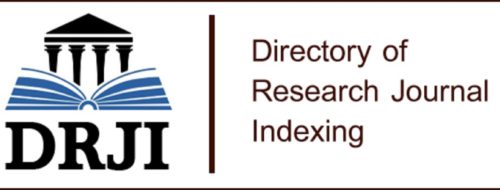Amphibious vehicle design: naval mechanics
Keywords:
resistance, effort, elements, nodes, deformationAbstract
In the following investigation, considerations of the upper body or superstructure are compiled for an amphibious vehicle with a capacity of 8 passengers designed in the Naval Mechanics Engineering career of the Faculty of Engineering of the Universidad Laica Eloy Alfaro de Manabí, therefore the objective will be to select and recommend the type of material for the super structure considering two relevant shipbuilding materials (fiberglass and aluminum), and a third material such as Bamboo, these must have the Poisson's ratio and the coefficient of elasticity; the model of the live work has already been designed in the SolidWorks program, the software that we will use to carry out the analysis by the finite element method is ANSIS, the simulated load will be a vertical force of 1000 Newtons and another horizontal force of the same magnitude, all evenly distributed.
Keywords: resistance, effort, elements, nodes, deformation.
Downloads
References
Bevan, S. (1998). Ósmosis en embarcaciones de fibra. Madrid: Ediciones pirámide.
Camino, D. A. (2010). La caña de Guadúa en la provincia de Manabí y el litoral de Ecuador. Manta: Congreso de Arquitectura de tierras en cuencas de campos.
Duch, B. (2018). Diseño integral y modelado BIM del Yate Balboa. Barcelona: Universitat Politècnica de Catalunya.
Fernández, R. (2020). Vehículos anfibios. pinterest.
FONDEAR. (2020). Materiales para cascos oceánicos. Infonautic, 6.
García, G. (2020). Carrocería monocasco. Prueba de ruta, 4.
García, S. M. (2015). Bambú como material estructural: Generalidades, aplicaciones, y modelización de una estructura tipo. Valencia: Licencia Creative commons, Universidad Politécnica de Valencia.
GEORGE GERMAN. (2019). Historia. vw166, 16.
Pancorbo, J. (2019). Ingeniería Naval. Madrid: Universidad Politécnica de Madrid.
Pavón, J., & Vallejos, F. (2015). DISEÑO Y ADAPTACIÓN DE CHASIS, CARROCERÍA Y SISTEMA ELÉCTRICO A UN VEHÍCULO ANFIBIO. Ibarra: Universidad Técnica del Norte.
Reyes, J. B. (2012). Plásticos reforzados en fibra de vidrio. Bogotá: Universidad tecnológica de Pereira.
Soto y Barreto, J. X. (2020). Diseño de un vehículo anfibio turístico con capacidad para 8 pasajeros. Manta: Universidad Laica Eloy Alfaro de Manabí.
Soto, J., & Barreto, X. (2020). DISEÑO DE UN VEHÍCULO ANFIBIO TURÍSTICO CON CAPACIDAD PARA OCHO PASAJEROS. Manta: Universidad Laica Eloy Alfaro de Manabí.
Torre, C. C. (2013). Caso práctico de un megayate de 61.2 m de eslora, Barcelona: Universidad politécnica de Catalunya.
Vásquez, G. (2008). Fabricación, propiedades y aplicación de aluminio. Metalurgia, 457 - 476.
Zienkiewicz, O. (2010). El método de los elementos finitos. Reverté.
Published
How to Cite
Issue
Section
License
Copyright (c) 2021 Revista de Ciencias del Mar y Acuicultura YAKU. ISSN: 2600-5824.

This work is licensed under a Creative Commons Attribution-NonCommercial-ShareAlike 4.0 International License.


1.jpg)













